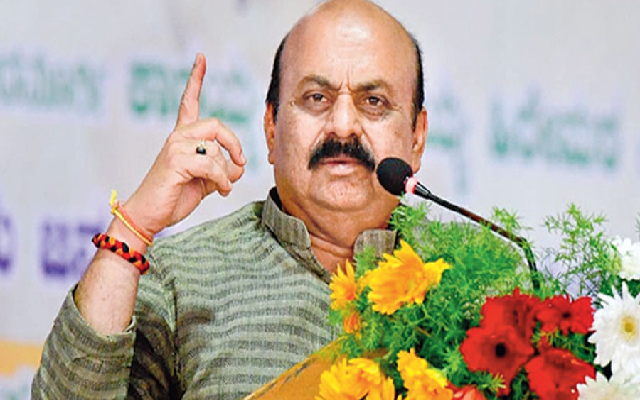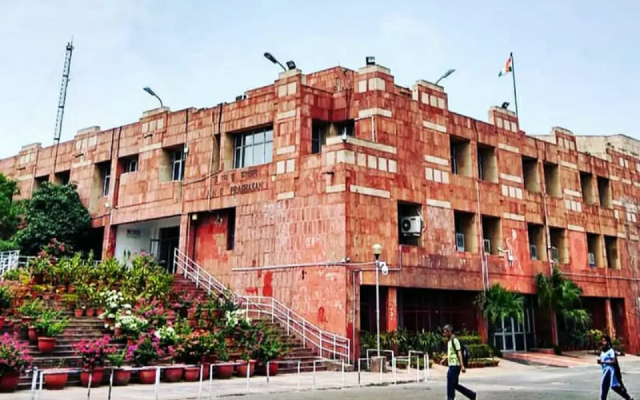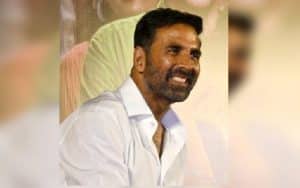He may have suspected he had a hit on his hands, but little did he know that within the year it would reach 400 shows – It is slated to celebrate its 400th show within a year of its release in London. A proud moment for its producer, Henry D’Silva, a Mangalorean by birth and a Mumbaikar by domicile as it is for all Mangaloreans. Henry D’Silva spoke exclusively to Karnataka Today’s managing editor Brian Fernandes on his journey into the film industry.
Konkani language is spoken mainly in the Indian states of Goa, Maharashtra and Karnataka and to a smaller extent in Kerala. Konkani films come in three distinct dialects Goan, Southern Saraswat and Mangalorean to cater to those specific linguistic communities and therein lies the dilemma of the Konkani Film industry.
The industry is limited by its fragmented audience and inadequate government support. Despite this there have been nearly 47 films since 1950 which saw the first full length feature film being released in the Goan dialect ‘MogasoAnvaddo’ by Jerry Braganza. The First Mangalorean dialect full length feature film Mog Ani Moipass came out in 1977 and the industry has not looked back since. Most of the years since then saw a single Konkani film release, but there have been a spate of releases in the last 4 years 16.
Since Ujwadu, a 2011 Konkani film directed by KasargodChinna and produced by KJ Dhananjaya and AnuradhaPadiyar there has been no Mangalorean Konkani film until, Henry D’Silva’s ‘NashibasoKhel’ (Game of fate)
Producer Henry D’Silva, at the time of the release had said, “I do not expect any profit from this movie, but it was my desire to produce a movie and do something for Konkani cinema. When Harry Fernandes willingly accepted my idea, it boosted my confidence. The story is something different from other usual movies. Music is also different from the traditional Konkani songs. I know, in theatres Konkani movies won’t run for long, but a few shows will surely boost our confidence”.
Excerpts
When NashibasoKhel was released in 2016, it was predicted to be trendsetter. It had a storyline different from the normal, it was the first non Goan dialect film released in almost four years and it had Bollywood director Harry Fernandes at the helm. It is now about to reach its zenith with 400 shows in India and abroad. Please elaborate on your motivation to make this film, and the journey so far..
From the past 40 years I am a part of the Konkani fraternity. Konkani language has been an integral part of my life. My passion and love for Konkani drove me to organize many dramas and musical nights.
In 1988, I made my first video film titled “KhazarantUprant” .At that point I spent Rs. 1,00,000/- and sold 500 cassettes. This first initiative got me an overwhelming response from more than 10,000 Konkani lovers. For the last 10 years there wasn’t a Konkani movie made, so with this dream in my heart I kept thinking of a good story to make my dream come true. Then like the movie title, “NashibasoKhel” (Game of fate), I hit upon right story line.
For the execution of my dream I am grateful to a lot of Konkani loving people along with my family members for their generous contribution in every aspect. The main characters of the movie along with the crew were etched in my mind while writing the story and our director Mr. Harry Fernandes’s experience in Bhojpuri and Marathi films has been to my benefit, also he has helped me in the post production of this movie.
My connections with people and the Konkani associations worldwide were a strong factor in helping me reach 400 shows globally. According to me for a movie to reach this monumental feat of 400 shows in our Konkani industry within a year itself is a marvel. In keeping with its success streak I intend to celebrate NashibasoKhel’s 400th show in London. This movie has gotten a record breaking response and I am looking forward to reach its 500th show.
Can you give our readers a couple of interesting ancedotes during the making of the film?
Everything in the movie went on smoothly..
There was a long gap between your first video, or Film KazarachaUpranth and Noshibachokhell – Any particular reason?
The reason for the long gap between my first movie “KhazaranUprant” and “NashibasoKhel” is definitely due to the research to find out what the Konkani people would like to see onscreen today. Times are changing and so are the situations, to see a family movie do so well regionally and globally is heartwarming. I am glad that I could do it “better late than never”.
What does it take in terms of time, money and effort to make a good Konkani film? Is the return on investment good enough for more people to venture into Konkani Film Production?
The most important requisite for a good Konkani movie is undoubtedly the STORY. The maximum time to complete a Konkani movie is about 2-3months provided the location and actors have time to spare. This is unachievable without the efforts and cooperation of the entire unit as a team. Also it is a reality that I could not have done this without generous sponsors and co-producers. So it is my humble request to people to come forward to invest in our movies if they hope to watch better Konkani movies on screen in the future. It is a very simple logic that a good script means a successful movie therefore good returns, it all comes down to what I began with – A GOOD STORY LINE.
Is there any government support for the industry, and if not what would kind of support would you like to see
The Government subsidy is only 20% (i.e Rs. 10,00,000/- ) for Konkani that is our regional language. I feel the government should do more if our Konkani industry has to come up further by providing financial support on a larger scale. Also in theatres Konkani regional films should have a fixed rate compared to other regional films.
Overall the Konkani Film Industry is dominated by Goan Dialect films. In fact of the 48 odd films released since 1950, which was the inaugural year, around 35 are of the Goan Dialect. Mangalorean Konkani Dialect comprise 14, of which 9 are of pure Mangalorean Christian Dialect. What do you have to say in this regard?
Goa is a commercial and cultural hub for dramas (tiatr) and films. Goan dialect films have government and public support, it is not the same in Mangalore. In Mangalore there are a lot of associations but no one comes forward to take initiative to finance or to organize shows which is trulysad considering how much talent and creativity remains unutilized. People have become self-centered and don’t think of the society as a whole.
Over the last 67 years, there has been in most years, just one Konkani film released per year. However over the last 4 years, nearly 18 films have been released, and interestingly 4 are in the Mangalorean Dialect. What do you attribute this increase in productivity in the Konkani Film Industry?
I believe that people used to go for dramas and musical nights earlier, but that has come to a standstill. Nowadays, people have extremely high standards when it comes to the content they like to watch be itTV serials or in cinemas – they are very choosy. So with so much of competition and comparisons the Konkani film industry is trying to use the “less is more” formula of showing strong matter in a 2 hour film instead of putting too many dramas that hardly people attend these days. I too have been successful in targeting only the 30+ agegroup audience which means there is still a long way to go to get our youth to come and watch a good Konkani movie with great subject matter.
Personally for you, how has Konkani film making affected your life – family, finances and business commitments?
Konkani film making has affected me tremendously as it took me 40 years to take this giant leap. I could only accomplish this because of my family’s support. Once you step into movies, one can’t venture into anything else as film making is a very complex process with a lot of planning, marketing, decision making and publicity activities that goes into it every day. The movie overall is played at the end but a lot goes into its making with a lot of patience, sacrifice, and hard work.
Would you like to take this journey into the Konkani Film industry further? What are your plans?
Of course, I will do my best to take the Konkani language and the film industry forward because there is a lot to be done. We as a community have a lot of untapped potential and resources that the world needs to know. We have so much talent that is just waiting for a platform to be showcased. If each person can do their bit and contribute, it won’t be long before our film industry makes an impact with great movies. My plan is to try to release a new movie targeting all the age groups by raising the bar. My goal is to keep our Konkani language alive and breathing by keeping up with the changing times.


















